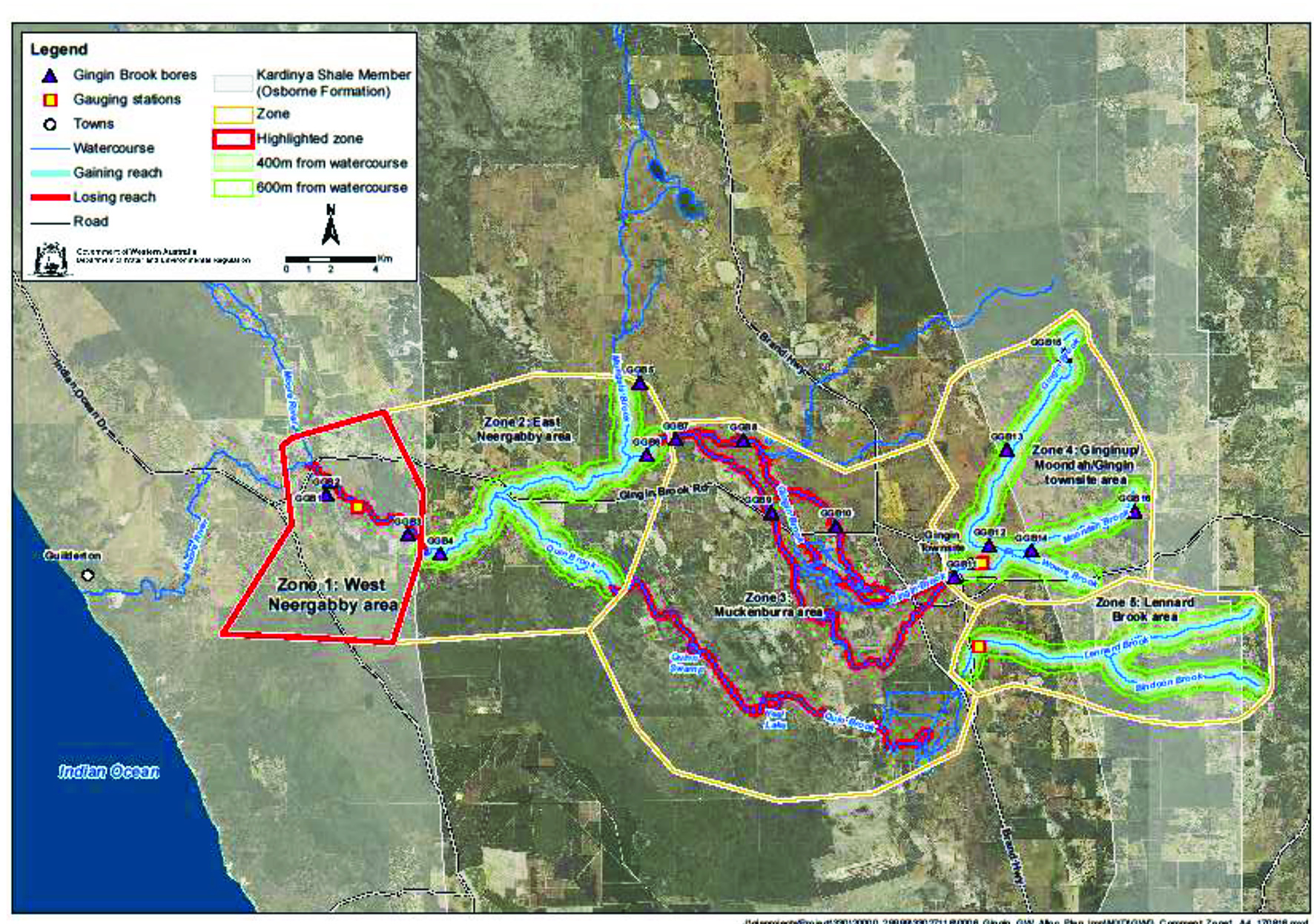David Rickson, Gingin Water Group
Scientists from the Department of Water and Environmental Regulation (DWER) have been advising the committee of Gingin Water Group on the information used to predict and manage Gingin’s water resources into the future.The Department has, and continues to spend considerable resources to better understand the characteristics of the region’s water aquifers particularly as they exist on the Dandaragan plateau and relate to the various brooks and streams that arise out of the Mirrabooka aquifer and its associated structures.
Information presented at its most recent forum included some alarming predictions about the influence Gingin’s drying climate will have on the future health of the region’s wetland assets and with that the general drying of grazing land.
The advice from DWER was to inform and educate the local community to the greatest extent possible. GWG realised it did not have the capacity to take the message deep enough into the community. Following GWG invocation the Shire has become involved, resulting in the formation of the Gingin Water Advisory committee. This new committee reports directly to the Council of the Gingin shire and is responsible for providing ongoing advice on the region’s changing water problems. It provides a conduit between the state water regulator and the local community using the shire’s ability to effectively communicate with every landholder, ratepayer and resident.
This level of local contact and data collection is beyond the resources of DWER.
In an effort to relay to the community the warnings provided by DWER Gingin Water Group has developed a Community Engagement Strategy which it will ask the shire to advertise to all landholders within a target zone.
DWER has advised that the wetland system originating in the headwaters of the Gingin, Moondah and Lennard brooks and stretching across the Muckenburra flats through Neergabby to the Moore river capture the wetlands and grazing farms most likely to be adversely affected by the drying water resource.
This region has been divided into five zones and it is the residents and ratepayers in those five zones who will be initially targeted.
With the help of DWER officials GWG has prepared five small files that summarise the information and predictions unique to each zone.
A large map identifying the zones hangs on public display at the Gingin Resource Centre. ( small version pictured above)
Members of the community are encouraged to visit the centre, to register their visit, and read through the relevant files. Copies of any file may be printed off for a small charge.
Gingin Water Group is of the view that a local, secure, database of all water resources on every property in the five zones is necessary to allow the regulator to give the best chance of protecting farmer’s natural rights water as well as the wetlands on their properties.
Water levels in bores, dams, soaks and wells fluctuate from season to season and year to year. Overuse from one source, particularly in dry periods, may influence water available to a neighbour or wetland feature close by.
The general trend over the last decade or so has been a decline of water levels at these shallow depths. This is the water source used by most farmers and residents across these targeted zones.
Abnormal influences on this water can only be identified from a comprehensive set of readings across properties kept on a central data base and continuously monitored over time.
Armed with this data the local authority can guide DWER to regulation decisions that more accurately reflect the aspirations of its ratepayers and residents.
All residents interested in the ongoing health of the region’s wetland assets and who rely on using water from the surface or associated water sources close to the surface (within 30 metres of the surface) are urged to visit the Gingin Resource Centre , register their interest, and view the Community Engagement Project as a first stage to adapting their properties to the dryer future.








